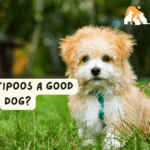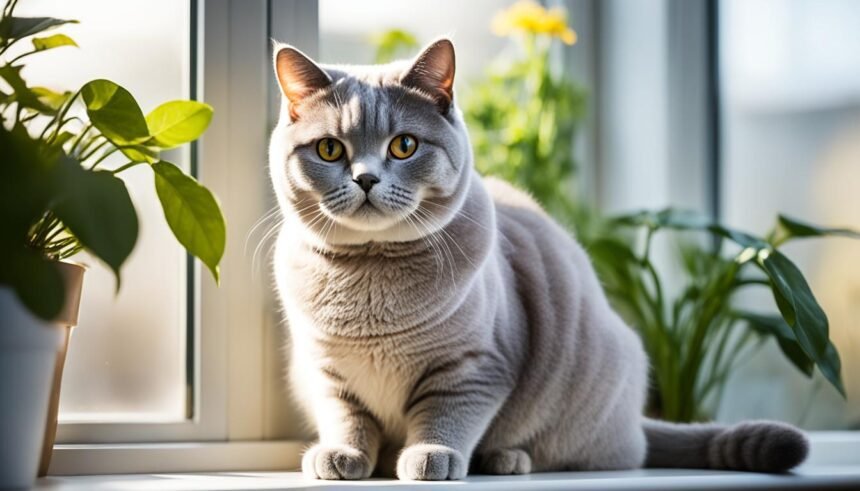About Boston Terrier
Boston Terrier are small, compact dogs with short, silky coats. Boston Terriers, known for their characteristic “tuxedo” markings of white with black, brindle, or seal (dark brown) coloring, are amiable and affectionate dogs who make excellent companions. These adorable puppies are also quite versatile and suited for apartment living. Boston Terrier puppies are also intelligent and easily trained.
The Boston Terrier was developed in the United States in the late 1800s. They are the offspring of a cross between the English Bulldog and the now-extinct English White Terrier, an ancestor of the Bull Terrier. Robert C. Hooper of Boston bred the first Boston Terrier, named Judge, in 1875.
The breed was previously known as the Roundhead, but its name was changed to Boston Terrier in 1893. This species immediately became popular among the wealthy and famous in the United States, where it was lovingly known as the “American Gentleman.”. The breed’s popularity dropped in the early twentieth century, but it has since rebounded and is currently one of the most popular dog breeds in the United States.
When considering a Boston Terrier, it is best to prioritize adoption from rescue groups or shelters to provide a loving home for a dog in need. However, if you decide to buy a Boston Terrier puppy, you must find a trustworthy breeder.
Conduct extensive research to ensure that the breeder adheres to ethical methods and prioritizes the welfare of their canines. Reputable Boston Terrier breeders prioritize their dogs’ health and temperament, perform required health checks, and provide a nurturing environment for the puppies.
Boston Terrier Overview
The Boston Terrier may have been bred to be a vicious pitfighter, but you wouldn’t know it now. The little American Gentleman, as he was dubbed in the nineteenth century, is unquestionably a lover, not a warrior, though males have been known to display their terrier ancestry with some posturing when they believe their territory is being invaded by another dog. Boston Terriers are well-known for their intelligence, which can be excessive at times.
Their energetic, friendly personality makes them highly lovable, yet their stubborn character or bouts of hyperactivity can get them into trouble with their owners. Any concerns about their behavior are quickly dispelled when they gaze up at you with those enormous, wide eyes that appear to say “I love you.” Despite their small size, Boston Terriers are strong and muscular.
They have a sleek, shiny, straight coat with crisp white markings in a tuxedo-like pattern, which is why they are known as the American Gentlemen. Boston Terriers’ unique ears are naturally upright and extremely huge. Then there are those enormous, lovely eyes that are set far apart, adding to their extraordinary good looks.
Their tail is naturally short (docking is not permitted) and positioned low on the rump. The Boston Terrier’s small size and energetic, friendly disposition make him an ideal family pet and companion. They adore children and entertain people of all ages with their antics and distinctive, appealing expressions. They make excellent companions for older persons and apartment dwellers. Although mild and even-tempered, they might adopt the feisty demeanor of their terrier ancestors.
Boston Terrier History
Although everyone accepts that the Boston Terrier originated in the late 1800s in Boston, Massachusetts, there are several different theories regarding how the breed came to be. According to one narrative, affluent families’ coaches invented the breed by breeding Bulldogs with the now-extinct English White Terrier to produce a new dog-fighting breed.
According to another tale, a Bostonian named Robert C. Hooper acquired a Bulldog/English Terrier mix named Judge from England in 1865 because he reminded him of a dog he had as a boy.
Another narrative holds that Hooper bought Judge from another Bostonian, William O’Brian, in 1870. While we may never know which myth is genuine, there was a dog named Judge, and the Boston Terrier breed is descended from him. Judge weighed approximately 32 pounds and was described as “a well-built, high-stationed dog” in The Complete Dog Book. He was a dark brindle color with a white blaze across his face and a square, blocky head.
Interestingly, Judge was only bred once. One puppy, a boy named Well’s Eph, was born from a coupling with Burnett’s Gyp (or Kate), a 20-pound white dog owned by Edward Burnett of Southboro, Massachusetts. By all accounts, Judge and Kate’s progeny was not a handsome dog, but he possessed other qualities that Hooper and his friends valued, so he was widely bred.
However, they were not originally named Boston Terriers. Many of Eph’s offspring were known by numerous names, including bullet heads, round-headed bull-and-terriers, American terriers, and Boston bulldogs. In 1889, some 30 Boston Bull Terrier owners created the American Bull Terrier Club, referring to their dogs as Round Heads or Bull Terriers. Fans of Bull Terriers and Bulldogs objected to the moniker.
Continue History
Initially, the color and markings of the breed were not seen as very noteworthy. Furthermore, while the dogs being bred fit the club’s standards, there was a high level of inconsistency within the breed. After years of meticulous inbreeding to establish the type, the Boston Terrier we know today was created. In the 1900s, the breed’s particular markings and color were painstakingly incorporated into the standard, making them a fundamental element of the breed.
Boston Terriers soon gained popularity in the United States. In 1915, Boston Terriers were the most popular breed in the United States, and they remained in the top ten until the 1960s, topping the list again in 1920 and 1930. In 1918, an incredible 60 Bostons competed in a single all-breed exhibition. Hollywood stars and actresses adored their Boston Terriers. Rudolph Valentino’s companion, silent cinema star Pola Negri, reportedly took her Boston Terrier, Patsy, everywhere she went, including restaurants and nightclubs.
When one of the restaurants refused to let her in with her pet dog, she stormed off, yelling, “No Patsy, no Pola.” Goodbye, forever! Louella Parsons, a prominent gossip journalist, also had a Boston Terrier named Patsy. In 1976, the Boston Terrier was chosen as the United States’ bicentennial dog.
Three years later, he was designated as the official state dog of Massachusetts. Rhett, the Boston Terrier is Boston University’s mascot. Wofford College in South Carolina and Redlands High School in California both have Boston Terriers as mascots.
Boston Terrier Size:
They are normally 12 to 17 inches tall at the shoulder. Whatever their weight, they should appear substantial, never scrawny or wiry.
Boston Terrier Personality

The Boston Terrier, often known as the American Gentleman, is a vivacious, intelligent, and friendly breed with a kind, even temperament. They might be resistant, therefore, persistence and consistency are essential during training. The Boston Terrier, like all dogs, requires early socialization—exposure to a variety of people, sights, sounds, and experiences—when they are young. Socialization helps your Boston puppy become a well-rounded dog.
Boston Terrier Health
Boston Terriers are typically healthy, although, like all breeds, they are susceptible to some health issues. Not all Boston Terriers will develop any or all of these problems, but you should be aware of them if you are contemplating this breed. If you’re buying a puppy, look for a reputable breeder who can show you health clearances for both of your dog’s parents.
Cataracts are cloudy films that form over the eye lens. Boston Terriers are prone to acquiring cataracts as both juveniles and adults. Juvenile cataracts occur between the ages of eight weeks and twelve months. While juvenile cataracts can sometimes be seen,. They are usually only discovered by a veterinary ophthalmologist using a CERF (Canine Eye Registration Foundation) test. When buying a Boston Terrier puppy, you should ask the breeder if the animal has been tested for juvenile cataracts.
Cherry eye is a protrusion of the gland on the third eyelid that is thought to be inherited. It most commonly affects canines under the age of a year. Some veterinarians medically reposition the gland back to its normal location at the base of the third eyelid. While others remove the prolapsed gland completely.
It is a disorder that begins at birth. However, the physical misalignment or luxation does not always emerge until much later. Patellar luxation can cause arthritis, which is a degenerative joint disease. Patellar luxation is classified into four stages, ranging from grade I, which causes intermittent lameness in the joint, to grade IV, which causes significant tibial twisting and cannot be manually corrected.
This gives the dog a bowlegged look. Severe patellar luxation may necessitate surgical repair
Heart murmurs: A faint or loud, harsh, regurgitant sound in the heart, particularly at the mitral valve when a deficiency allows blood to backflow into the left atrium. As a result, the heart is less efficient in pumping blood throughout the body. Treatment frequently includes a low-sodium diet, exercise restriction, diuretics, and medicines.
Deafness: Boston Terriers are prone to losing hearing in one or both ears. Breeders should have their puppies BAER tested to establish the condition of their ears before they are placed in new homes. It is worth noting that Boston Terriers with more than one-third white on their heads and/or bodies have a higher incidence of deaf puppies.
Allergies: Boston Terriers can develop a range of allergies, including contact allergies and food allergies. If your Boston licks his paws or rubs his face excessively, he may be allergic. Your veterinarian can identify allergies.
Megaesophagus: A structural abnormality in the esophagus that leads a dog to regurgitate undigested food. Regurgitation differs from vomiting in that it usually occurs unexpectedly, whereas vomiting requires obvious effort.
Reverse sneezing is a condition that can develop at any stage in your Boston Terrier’s life. Generally, it happens when your dog is excessively excited, gulps his meal too quickly, or is impacted by pollen in the air. Nasal secretions settle on the soft palate, causing it to shut over the windpipe.
The dog wheezes and may become startled. To shorten the episode, talk soothingly to him and encourage him to relax. Some people believe that clamping the dog’s nostrils closed or placing your palm over his nose to force him to breathe through his mouth is the quickest way to stop reverse sneezing. You may also try stroking his neck.
Terrier Care
The Boston Terrier is a vivacious dog that does not require a lot of exercise. He’s relatively idle indoors and ideal for apartment dwellers or those without a yard. He enjoys going on walks with you and playing in the yard, but he is obviously an indoor dog and should never be kept outside.
Always bear in mind that Boston Terriers do not tolerate extreme temperatures. Bostons are sensitive to your tone of voice. And punishment can cause them to shut down, so training should be calm and motivating.
The Boston Terrier Feeding
The recommended daily dosage is 0.5 to 1.5 cups of high-quality dry food, divided into two meals.
The amount of food your adult dog consumes depends on its size, age, structure, metabolism, and level of activity. A highly active dog requires more than a couch potato.
The quality of dog food you buy also matters; the better the dog food. The more it will nourish your dog the less you’ll need to shake it into his bowl. Boston Terriers may be food hogs, so keep an eye on their weight to ensure they don’t get obese.
They are also prone to flatulence, which could be due to their diet. Feed high-quality food to lessen the possibility of this condition. For additional information on feeding your Boston Terrier. Check out our tips for selecting the proper food, feeding a puppy, and feeding an adult dog.
Boston Terrier Coat Color and Grooming
The Boston Terrier, perennially ranked as the best-dressed dog, has a smooth, beautiful coat that comes in three colors: black, seal (looks black but has a reddish hue when seen in sunlight), or brindle, all with a white snout, face blaze, and chest, giving him the appearance of wearing a tux. Boston Terriers do not come in solid hues like black, grey, liver, or white. Be aware of breeders that attempt to sell you one of these puppies due to their “rare” color.
Failure to adhere to the breed standard is a hallmark of a low-quality breeder. Boston Terriers are easy to groom. Brush them monthly with a hard bristle brush and bathe them with a dry, powdered shampoo and a damp cloth, or bathe them as needed. Because their eyes are so huge and conspicuous. You should wash their faces every day and examine them for symptoms of redness or irritation.
Although they shed, it is minor and may be readily handled with regular brushing. Brush your Boston Terrier’s teeth at least twice or three times per week to remove tartar and the bacteria that live inside them. Brushing your teeth daily is even more effective for preventing gum disease and foul breath. Trim your dog’s nails once or twice a month if they do not wear down naturally to avoid painful tears and other issues.
As you groom, look for sores, rashes, or symptoms of infection such as redness, tenderness, or inflammation on the skin, nose, mouth, eyes, and feet. The eyes should be clear, without redness or discharge. Your thorough weekly examination will assist you in detecting potential health issues early.
The Boston Terrier Children and Other Pets
The Boston Terrier adores children and makes an excellent playmate for them. He’s little enough to avoid knocking them down while also being huge enough to avoid injury. In general, he gets along well with other dogs and cats, especially if he is introduced to them at a young age.
Boston Terrier Rescue Groups
The Boston Terriers are frequently purchased without a thorough understanding of what goes into owning one. There are numerous and Boston Terriers in need of adoption or fostering. If you do not find a rescue listed in your region, contact the national or local breed clubs. And they will direct you to a Boston Terrier rescue.
Finding a trustworthy dog breeder is one of the most critical decisions you will make when adding a new dog to your family. Reputable breeders are dedicated to producing healthy, well-socialized puppies who make excellent pets. They will evaluate their breeding stock for health issues. Socialize their puppies from an early age, and offer you lifetime support.
On the other hand, backyard breeders are more concerned with profit than with creating healthy, well-adjusted pets. They may not screen their breeding stock for health issues, and their puppies may not be properly socialized. As a result, puppies produced by backyard breeders are more likely to have health and behavioral difficulties.
Read More…
Is a Siberian Husky a Good House Dog?













